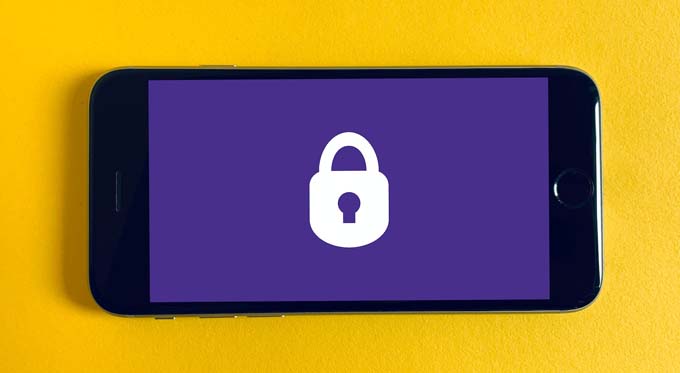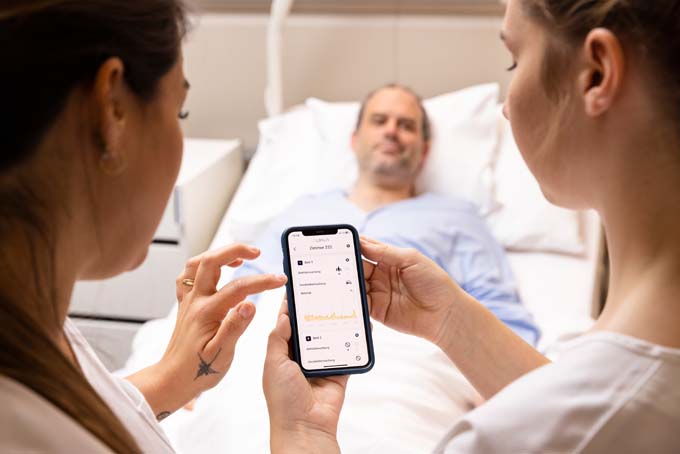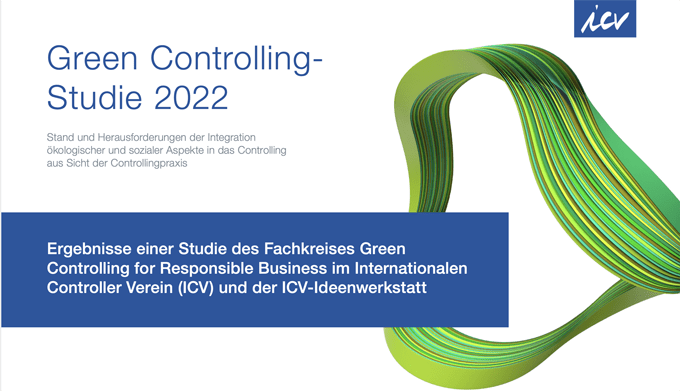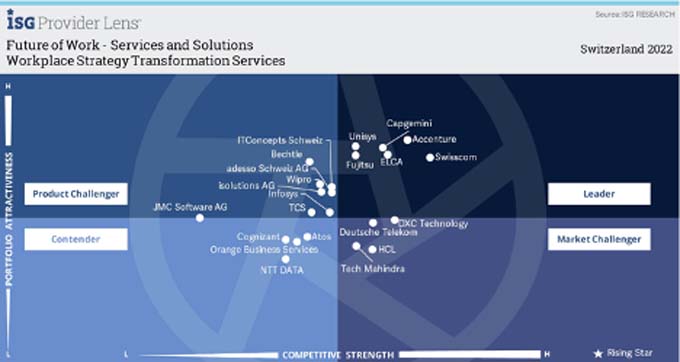Safety briefings for new employees: possible methods and approaches
Even in a pure office environment, there are many dangers. But they are much greater where machines and similar systems are at work - and safe operation often depends on human behavior. But how do you brief new employees in this regard as effectively as possible? There are several options, all of which have their strengths and weaknesses.
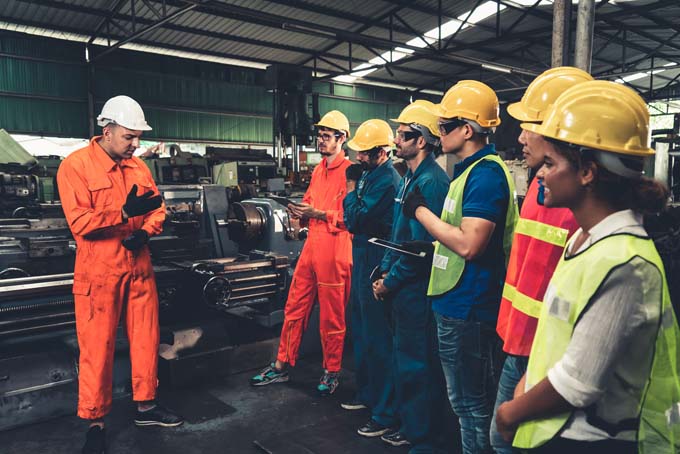
Industrial accidents are undoubtedly among the most biggest possible disturbances in companies not least because they can occur in so many different forms and cause the most serious consequences. In principle, they range from employees tripping and injuring themselves to collapsing high-bay racks, major fires and sometimes even massive consequences for entire regions. Let us think of one of the most serious Swiss industrial accidentsthe major fire at Sandoz in 1986 - most likely caused by incorrect shrinkage of plastic film during palletizing.
Now Switzerland knows Numerous legal requirements for accident prevention. Among other things, this includes the obligation to provide instruction. Quote from Art. 6 VUV:
"The employer shall ensure that all persons employed in his company are
employees, including those who work there, as well as the
Employees of another company, sufficient and
be adequately informed and guided about the
hazards that may arise during their activities and about
the measures of occupational safety. This information and
Guidance have at the time of starting the job and at each
substantial change in the working conditions to take place
and shall be repeated if necessary."
However, this "adequately informed" can be approached in different ways. We will now show you which ones.
Instruct employees in safety technology
- Movies
As early as World War II, the U.S. was using films to train soldiers. On the one hand, this decoupled learning from the didactic skills of the instructors. On the other hand, because films can get to the heart of certain issues in the language of the target group. To this day, educational films are therefore also a common teaching tool in the field of occupational safety worldwide, but this is linked to various negative facts:
- Permanent attention needed.
- Often only general, not related to the specific work location.
- Sometimes irrelevant/outdated information.
- Entertainment value may exceed information value.
- Hardly any opportunity to repeat knowledge.
- Elaborate and expensive to produce.
- Presentations
The presentation is similar to the film approach. However, it is more suitable in that multimedia information is conveyed using slides, photos and clips, supplemented by additional explanations from people present. This allows a much better response to the audience, and in addition, a presentation can be adapted to changing requirements with little effort. The disadvantages:
- Good presentations depend at most on the skills of the presenter - both during the instruction and when designing the slides.
- Every presentation is slightly different, even if the same person gives it with the same slides.
- Recording and thus knowledge repetition only possible via detours (videos).
- Handouts and catalogs
It is not for nothing that most operating instructions are still enclosed in printed form. Because the written word is extremely patient, inexpensive to implement and, above all, everyone can go through the information conveyed again and again without their own intervention (such as taking notes) - without the need for an accompanying person. Moreover, such handouts can easily be turned into a gateway to the digital world. Then, when they are combined with a really powerful tool the QR code. It can, for example, lead to clips supplementing the written information at the appropriate point, can initiate final tests or build a wide variety of other digital bridges. Since the QR code basically only requires a URL, it can conceal anything imaginable.
But do these facts make handouts the best approach for safety briefings? Not necessarily:
- Readers must be able to speak the language
- Reading and comprehension are two separate requirements - the worse the writing, the harder the comprehension.
- No way to verify an intensive read-through and understanding by all employees - at least not without testing.
- May seem too dry on some characters due to its nature, which significantly reduces attention.
- Comics
Comics manage to tell complex stories with just a few drawn pictures, and sometimes even without any further text at all - and not just for children. Once again, it was the military that chose such an approach early on, in order to to explain concrete facts. The advantage is the possibility of conveying very specific, complex information, since comics do not rely on text alone, but an illustration. Furthermore, even comics on rather dry topics can get attention through an exciting design - and sometimes even be cross-linguistic. The disadvantages of classic written handouts are therefore greatly reduced. However, comics are not perfect either:
- Creation requires graphic expertise. Almost anyone can write, but not draw.
- Can sometimes seem too infantile to some contemporaries.
- Due to the scope, rather suitable only for specific topics, such as "Safety check on the forklift before starting work".
- Online courses
In principle, a website can display anything that is desired within the framework of the programming language used and the available storage space. As a result, it can naturally also be a means through which an enormous range of safety information can be conveyed to new employees.
Written, pictorial, linguistic, all of these can be applied here and can also be repeated by the subjects themselves as they see fit. In fact, the entire briefing can even be designed in a way that makes it possible to measure usage - for example, via a dwell time on the respective slide or the need to click on several pieces of information before the next page can be called up.
There is only one disadvantage to this, but it is a big one. Because a lot of technical and IT expertise is needed to set up such courses. The higher the quality, the more expensive and time-consuming it becomes.
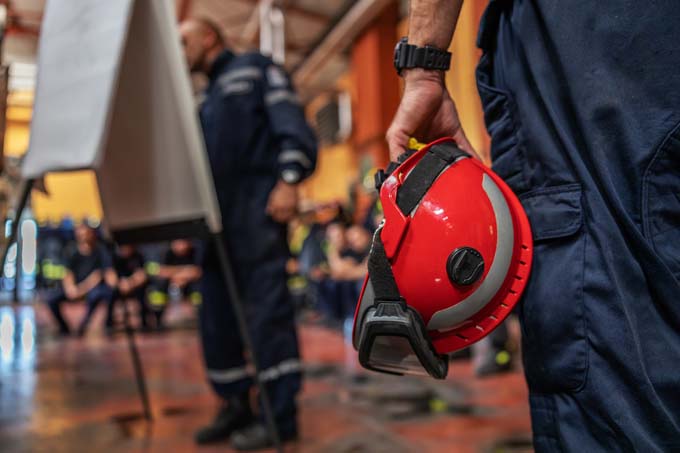
Safety briefings: the mix makes the difference
You may have noticed: None of the methods presented here is perfect on its own - if only because it is costly. While no company should put a price tag on something as centrally important as safety briefings, a certain framework must of course be maintained.
But what is the best approach under this premise? It is always a balanced mix of several methods. Perhaps the best basis is a clean presentation, especially if several new team members are to be instructed at the same time. Everything can be packaged very well in that.
A handout is issued to supplement this. On the one hand, it should contain the same content as the presentation slides. On the other hand, it can be supplemented with further written and comic-like information. Where it makes sense (e.g., with videos), a QR code should always be integrated that links to the corresponding digital content - especially for younger generations of digital natives, this is highly recommended.
With this approach, safety briefings become more than just a one-time instruction. It becomes a multimedia code of safety that can be looked up and added to again and again. If this is cleverly combined with realities of the work environment (for example, by using the same designations at the work site), then it becomes information transfer that really sticks in the mind - and thus helps to prevent large and small workplace accidents.










